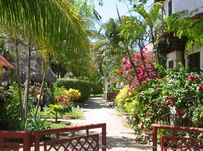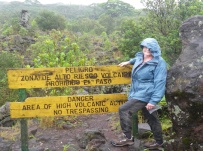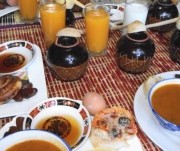In this first of our monthly blogs dedicated to language holidays abroad, we’re sharing with you what’s new, what’s on offer and where our students are going. We hope that you’ll be informed and inspired!
Hello, and welcome to a new monthly blog here at Cactus! My name is Ollie, and I am the Product Manager for our agency – Cactus Worldwide. Our team of experienced course advisors are here every day to discuss options with you and help set up a varied range of unique language-learning experiences, all over the globe, throughout the year, for all of our wonderful students.
This short blog is designed purely to keep you informed about what we’re up to at the moment: what’s new, what’s on offer, and where our students are going. I hope this will be of interest, and may even provide you with inspiration for your next language-learning experience with Cactus. This month’s topic is Focus on: Spanish and if you have any questions about anything you read here, please feel free to contact me directly and I’d be happy to help.
Contents:
1. Green season in Costa Rica – why go now?
2. La Tomatina in Spain – not to be missed!
3. 2 weeks for £200 in Granada, Spain
4. 20% off in Sosua, Dominican Republic
5. Spotlight on Karoline Lamb – learning Spanish in Cartagena, Colombia
1. Green Season in Costa Rica @ Intercultura – Colonial Heredia & Playa Samara

We are still accepting enrolments for students looking to study Spanish in Colonial Heredia & Playa Samara during Costa Rica’s ‘green season’ which runs up until November. There is traditionally more rain during this time, but you certainly shouldn’t let it put you off! It’s definitely worth enduring a bit of drizzle for the great value flights that are available and opportunities to visit incredible sites such as Arenal volcano, La Paz Waterfall and Monteverde Cloud Forest during the low season.
This season in Heredia and Samara is very popular with individual students in their 30s, 40s and 50s, and we can also arrange set programmes of classes, accommodation, activities and all-inclusive excursions for groups of 3 or more from £720 per person, per week. Highlights this season are performances by the National Symphonic Orchestra on October 31st and November 25th – so try and make those dates if you can! The school has two centres – one in Heredia, close to San Jose, and another on Samara beach, so students can split their time between the two.
2. La Tomatina 2013! @ Taronja – Valencia
August 28th 2013 is the date set for this year’s ‘La Tomatina’ – an epic food fight (mostly involving tomatoes) which happens in Buñol, close to Valencia, on the last Wednesday of August every year. In 2012, 50,000 people turned up to pelt one another with over one hundred metric tonnes of over-ripe fruit. Giant trucks deliver the fruit to Plaza del Pueblo at 11am on the day, and then the fight ensues…
The week-long festival also includes live music, parades, dancing and firework displays, and our partners in Valencia still have good availability for all course + accommodation options for the week if you are looking for a late last-minute summer break! They will be arranging a school trip to La Tomatina, so that would all be arranged for you. Just don’t forget your goggles…

The great ‘Chef Nando’ in Valencia, preparing pre-Tomatina paella.
3. Special Offer: 2 weeks for £200 in Granada, until the end of 2013 – Granada, Andalusia
If you are looking for a great autumn/winter deal this year then look no further than our partners in Granada, who are kindly (and exclusively) offering Cactus students 2 weeks of classes for only £200, inclusive of course materials and registration fees. The course provides 20 lessons per week, Monday to Friday, usually occurring in the morning between 9am and 1.30pm, and there are activities and excursions available.
Centrally located, the school is medium-sized and provides a friendly, relaxed and international atmosphere in which to enjoy your studies; this option is highly recommended by Cactus for a great value late-season trip to brush up your Spanish.
4. September Special: 20% off course + accommodation in Sosua – Sosua, Dominican Republic
For those of you in the U.S. or those looking for something further afield, how about a course on the beach in Sosua this September? It’s a great month for learning Spanish in the Dominican Republic – especially for students interested in water sports and scuba diving. The conditions are superb, with very good visibility, warm water temperatures and very few other tourists around.
Cactus can currently offer 20% off all listed course and school accommodation prices on request (via info@cactuslanguage.com) and you can check out the listings online here. The school accommodation is basic, but on-campus and with breakfast included (and a pool!), so you can relax as much as possible between your classes.

The private apartment complex (in the school grounds) in Sosua, Dominican Republic.
5. Spotlight: Karoline Lamb – Cartagena, November 2013
One of my favourite students to have helped in the last month is Karoline Lamb, who has just booked a 4-week Intensive Spanish course with host family accommodation in Cartagena, Colombia, with Cactus, for this coming November, en route to visiting her daughter and family in Australia. The accompanying photograph, kindly provided by Karoline, is of her on her travels and trespassing in South America last year.

Karoline’s unquestionable passion for people, learning Spanish and exploring South America is admirable and infectious, and she also intends to contribute to the Juan Felipe Gómez Escobar Foundation as a volunteer during her time in Cartagena – an institution set up to offer assistance to under-privileged children and young parents. I hope she has a wonderful time, and we are all looking forward to receiving her feedback!
Thank you for reading, and I hope this blog has been of interest – please feel free to call us, or contact me directly by e-mail, if you have any questions about anything you have read here. Of course, if you are interested in arranging a trip for yourself later this year, I’d be happy to help!
Best wishes,
Ollie
—————————————————————————————————————–
Oliver Donovan
Agency Product Manager
Email: oliver.donovan@cactuslanguage.com














